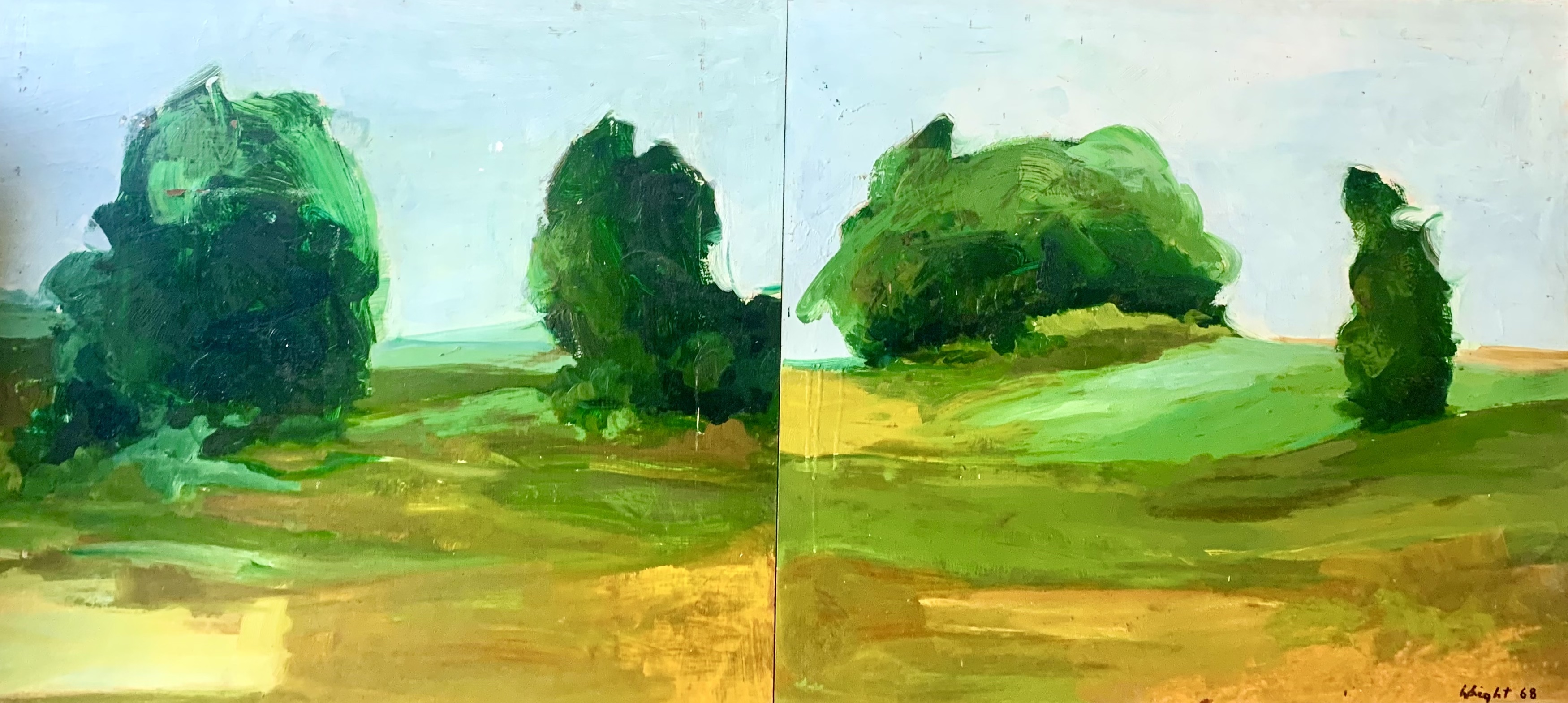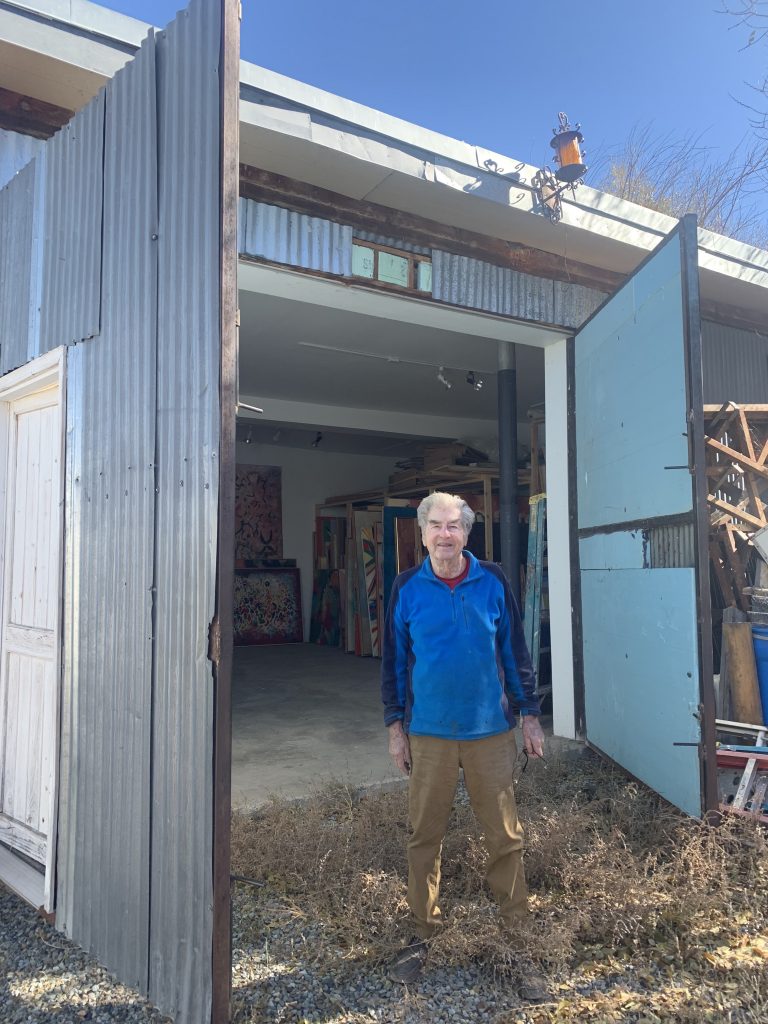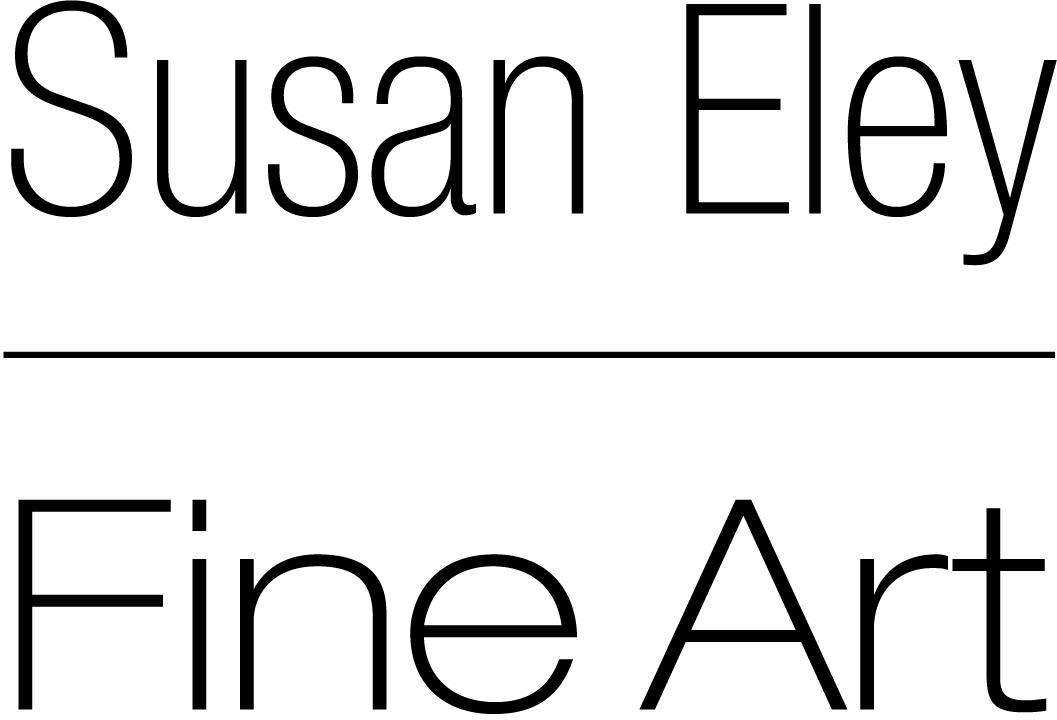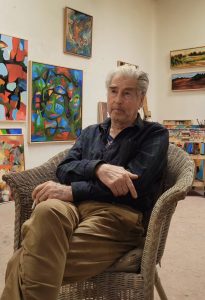
Studio Visit With Octogenarian Abstract Expressionist Artist Michael Wright
I arrive at Michael Wright’s studio on a crisp, cool day in late fall in Santa Fe, New Mexico. Michael greets me at the door and we head straight to his studio, a large room with copious stacks of paintings. His artworks lean against every wall and congregate in every corner of the space. Michael lights a cigarette and takes a seat, inviting me to sit with him for a chat. I am torn: I want to hear all about this 90-year-old artist, but I’m also eager to peruse the multitude of paintings. I feel like a kid in a candy store—a buzzing sensation I experience during studio visits—as I steal glances at the bevy of colorful abstract canvases. My patience pays off as we talk through the morning and I hear more about his life.
Michael Fitzhugh Wright was born in 1931 in New Rochelle, NY. He studied at the Yale Music and Art School, the Albright Art School, and the Brooklyn Museum before he was drafted as a regimental artist in the Korean War. Following the war, he lived for a decade in New York City, where he socialized with Jackson Pollock, Franz Kline, and David Smith, among others. He also frequented the Cedar Bar and other haunts of the Abstract Expressionist legends, whom he called his colleagues and friends. He knew jazz great Charlie Parker and developed a passion for jazz music, which he still regularly listens to as he paints.
In 1964, Wright decamped from New York City to East Hampton, Long Island to work as Willem de Kooning’s studio assistant. For three years, the younger man stretched canvases, mixed paints, and drove de Kooning around on his errands.
Seeking his own artistic voice, Wright moved to Cambridge, Massachusetts, later to rural New Hampshire, and eventually found his way to Santa Fe in 1986. He was drawn to the quality of the light and air, as well as the beauty of the Southwestern landscapes.
In spite of a pack of cigarettes a day, a stroke, and some other health issues—Wright looks and acts as a much younger man than 90. He stands as straight as a rod, moves heavy paintings around his studio with seeming effortlessness, and practically bounds down the path next to his adobe house towards an old barn, where more art is stored. He is not slowing down as a creator—apparent as the artist pulls a multitude of 2020-2022 paintings from the racks to share with me during our visit.
While selecting the paintings for a future exhibition that we will organize for our Gallery in Hudson, New York, I am initially drawn to the abstractions. The organic, curved shapes and the surprising juxtaposition of colors and forms recall Arshile Gorky; the harder-edged color field paintings, Hans Hofman; and I see the influence of William Baziotes in the canvases that nod towards Surrealism.
Although large abstract paintings reign in Wright’s storage racks, I glance at several long, horizontal landscapes. They were created in 1968 in the Hamptons. While not evidently beach scenes, they recall the environmental aspects of the shores along the bay in eastern Long Island—with their clear, naturalistic horizons and bushy green trees along dunes.

Walking back to the studio, we together admire a series of more recent landscapes, inspired by Diablo Canyon outside of Santa Fe. Painting with thick, impasto brushstrokes in warm red, orange, terracotta, and green—Wright captures craggy outcrops, canyons and hilltops using a rich and substantial application of oil paint. The imagery is abstracted, yet as entirely identifiable as specific locations in this unique part of the American Southwest. His works even recall the abstracted landscapes of Arthur Dove or John Marin.
Wright has painted for many decades and has been influenced by a myriad of mid-century abstractionists. It would be difficult to assert that his practice was not influenced by some aspects of every major art movement of the latter half of the 20th century. And yet, Wright’s paintings—Diablo Canyon and East Hampton landscapes, which we are delighted to debut at SEFA Hudson on the East Coast—truly reflect his unique voice. These works capture Wright’s particular story to tell about a few of the places where he has lived and loved.
— Susan Eley
November 10, 2022
Santa Fe, New Mexico







